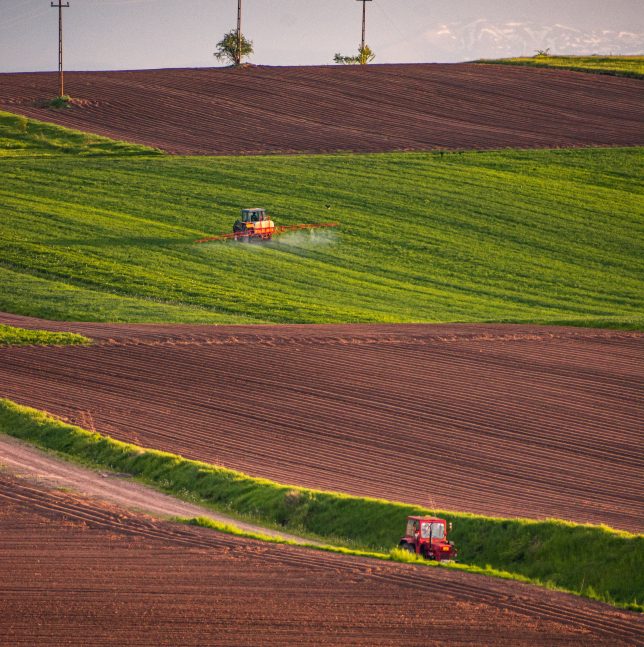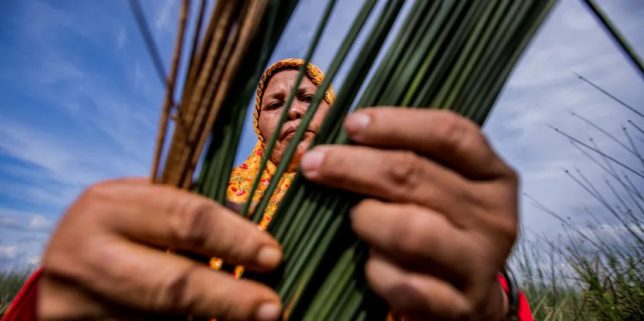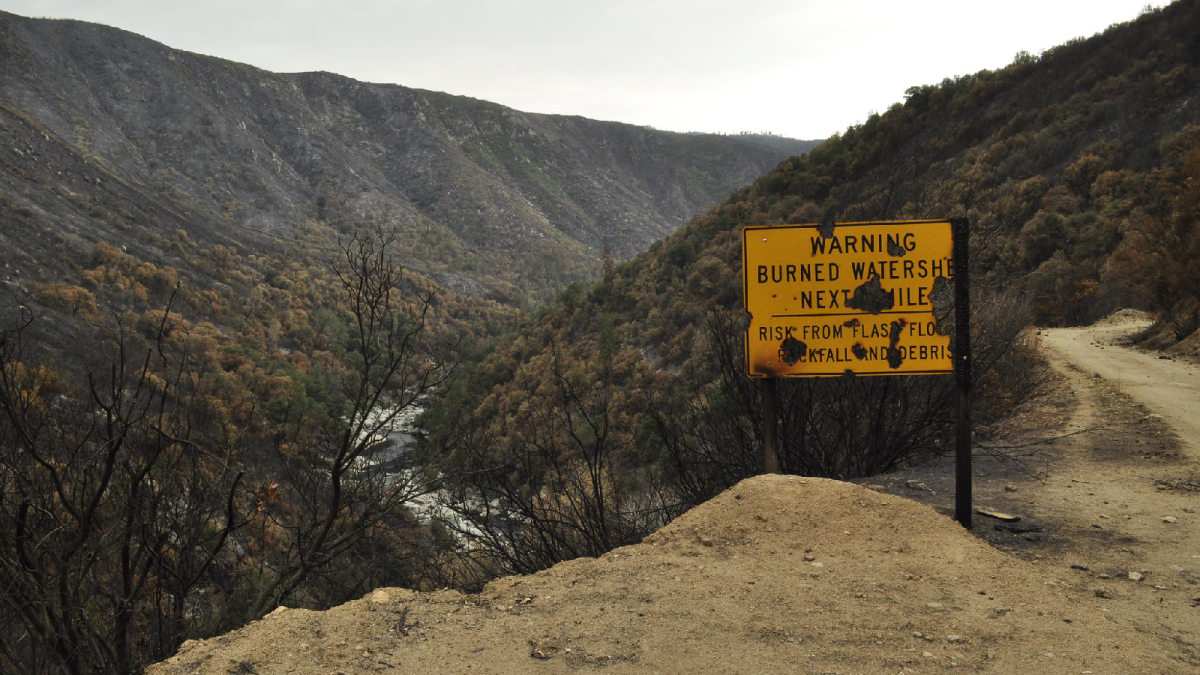
While agrochemical corporations promote “flawed solutions,” said one advocate, “we need deeper, transformative approaches to actually solve the root problems of our broken food system.”
By Kenny Stancil, Common Dreams
Even though synthetic pesticides—the majority of which are derived from fossil fuels—contribute significantly to planet-heating pollution and increase the vulnerability of food systems, industrial agriculture interests continue to recklessly portray further pesticide use as a sensible response to the climate emergency’s worsening impacts.
That’s according to a recent report published by the Pesticide Action Network North America (PANNA), which details how agrochemical corporations exacerbate the climate crisis by refusing to admit that pesticides are part of the problem and instead promoting “false” solutions that enable them to keep peddling their highly profitable petroleum-based products.
The January report outlines how policymakers can help mitigate the climate crisis and build just and sustainable food systems by setting targets to drastically curb pesticide use, supporting agroecological farming practices, and protecting the rights of low-income individuals, disproportionately people of color, who are most harmed by pesticides, including farmworkers and residents of areas where the toxic substances are produced and applied.
“Governments are investing billions of dollars to address climate change, but these investments will fall woefully short unless they incorporate pesticide use reduction strategies and promotion of agroecological growing practices.”
“Reductions in pesticide use and the adoption of agroecology would decrease greenhouse gas emissions, while also reducing acute poisonings, long-term diseases like cancer, and other health impacts that rural communities face from pesticide exposure,” Nayamin Martinez, executive director of Central California Environmental Justice Network, said in a statement.
As the report explains: “Pesticides contribute to climate change throughout their lifecycle via manufacturing, packaging, transportation, application, and even through environmental degradation and disposal. Importantly, 99% of all synthetic chemicals—including pesticides—are derived from fossil fuels, and several oil and gas companies play major roles in developing pesticide ingredients.”
Pesticides, the offspring of a World War II-era marriage of Big Ag and Big Oil, help drive global warming to a greater extent than many realize, as the authors document:
Other chemical inputs in agriculture, such as nitrogen fertilizer, have rightly received significant attention due to their contributions to greenhouse gas emissions. Yet research has shown that the manufacture of one kilogram of pesticide requires, on average, about 10 times more energy than one kilogram of nitrogen fertilizer. Like nitrogen fertilizers, pesticides can also release greenhouse gas emissions after their application, with fumigant pesticides shown to increase nitrous oxide production in soils seven- to eight-fold. Many pesticides also lead to the production of ground-level ozone, a greenhouse gas harmful to both humans and plants. Some pesticides, such as sulfuryl fluoride, are themselves powerful greenhouse gases, having nearly 5,000 times the potency of carbon dioxide.
Despite mounting evidence that pesticides are helping to accelerate planetary heating, “climate change impacts are expected to lead to increases in pesticide use, creating a vicious cycle between chemical dependency and intensifying climate change,” the report notes. “Research shows that declining efficacy of pesticides, coupled with increases in pest pressures associated with a changing climate, will likely increase synthetic pesticide use in conventional agriculture. An increase in pesticide use will lead to greater resistance to herbicides and insecticides in weeds and insect pests, while also harming public health and the environment.”
That agricultural production is a substantial contributor to greenhouse gas (GHG) pollution is increasingly acknowledged, but the role played by pesticides is “infrequently addressed” and “many proposed solutions would not result in meaningful GHG emission reductions,” says the report.
It continues:
An example of a false solution is precision agriculture, which promises to reduce the use of petroleum-derived pesticides and fertilizers by using computer-aided technologies to more accurately determine need (pest presence) and then more accurately apply pesticides to intended targets. However, precision agriculture maintains a system dependent upon chemical- and energy-intensive technologies and materials, while diverting attention from and investment in more effective climate-friendly strategies in agriculture that have additional social and public health co-benefits, such as agroecology. Precision agriculture also increases the power and control of agrochemical companies, many of which own the precision agriculture platforms and the data inputted by farmers.
Another flawed solution, carbon markets, allows agribusinesses or farmers to sell carbon credits to corporations to “offset” continued greenhouse gas emissions—perpetuating reliance on fossil fuels. Carbon markets have a poor track record in terms of long-term climate mitigation, and have been shown to worsen economic and racial disparities.
Co-author Asha Sharma, organizing co-director at PANNA, said that “our new report reveals how oil and gas companies and pesticide manufacturers have followed a similar playbook—strategically promoting flawed solutions to the climate crisis, like carbon capture and storage and new digital agriculture tools, which in reality offer minimal climate benefits.”
“Corporations tout these novel technologies to protect their reputation, while they continue to profit from fossil fuels,” said Sharma. “We need deeper, transformative approaches to actually solve the root problems of our broken food system.”
The report makes the case for agroecology, which it defines as “a way of farming rooted in social justice that focuses on working with nature rather than against it.”
Agroecology “relies on ecological principles for pest management, minimizing the use of synthetic pesticides, while prioritizing the decision-making power of farmers and agricultural workers,” the report notes, adding that such an approach improves “the resilience of our agricultural systems to better withstand climate change impacts.”
The report makes three key recommendations for policymakers:
- Establish measurable goals in climate policies to reduce synthetic pesticide use in agriculture;
- Promote the transition to biodiverse, agroecological food and farming systems, such as by establishing and funding programs that provide increased technical assistance and incentives to farmers to adopt or continue these farming practices; and
- In line with international law, adopt regulations that uphold and promote the rights of groups most impacted by synthetic pesticide use.
“Transitioning our agricultural systems to those that uplift ecological and social justice principles will not only help mitigate climate change, but also reduce the negative health impacts of industrial agriculture,” says the report. “While the work toward future policy and practice change continues, we can collectively support the advocacy work of impacted communities and organizations fighting for more equitable and sustainable food and farming systems right now.”
Co-author Margaret Reeves, a senior scientist at PANNA, argued that “governments are investing billions of dollars to address climate change, but these investments will fall woefully short unless they incorporate pesticide use reduction strategies and promotion of agroecological growing practices.”


